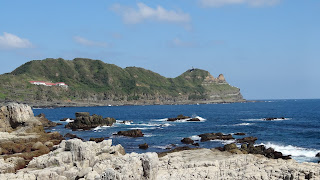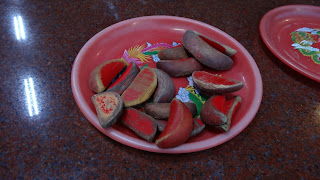Let me be honest and not beat around the bush. I LOVE Singapore and this post is all about why……..
Singapore can pretty much be what you want it to be in its own way. As a tour guide at the Asian Civilisations Museum I tell visitors about the Monsoon winds which carried in trade from both East and West to the straits of Malacca, at the bottom of which you find Singapore. With this trade came religions, artistic representations and culture and of course they influenced this part of the world. These influences are still very much present in Singapore today.
To soak in the multi-sensory experience of South Asia you can head to Little India. Here the wet market and hawker centre are almost always bustling with people and beautiful Hindu temples line Serangoon Road. At the right time of day you will see worshippers at the temples engaging their senses through music, food, incense and touch. Not to mention the overwhelmingly visual aspects of the bright and colourful façade with a seemingly endless variety of Gods and deities. The legendary Mustafa’s really does sell anything you might need and Deepavali and Thaipusam are celebrated here in style.
For an experience of West Asia head to the Arab quarter where the Sultan mosque dominates the skyline with its beautiful golden dome. A bright and colourful array of fabrics, rugs and carpets can be purchased here. During Ramadan food stalls line the streets outside the Mosque as the community comes together each evening to break their daylight fasting.
Chinese culture is widely represented in Singapore. Chinatown itself is worthy of some exploring beyond the main tourist haunts lined with souvenir stalls. Thian Hock Keng temple on Telok Ayer street is thought to be the oldest Chinese temple. The Three Teachings of China are represented here giving us an insight into the Chinese way of life, but that is a whole other blog post (December 2014). During Chinese New Year the stalls seem to multiply and you can see groups of Lion dancers all around the city.
What about the rest of South East Asia? Well it is all around us. Thai food and temples are dotted all around the island. Head down to the East Coast on a public holiday and see the local Malays playing Sepak takraw (kick volleyball) and sharing a family picnic. A Burmese temple stands behind the Sun Yat Sen Nanyang Memorial Hall, an important location during the Chinese revolution. The list of examples of cultures that sit, side by side, is possibly endless.
Standing at these crossroads of culture you might ask a question, one which has been asked during the year of Singapore’s Golden Jubilee celebrations. What’s makes Singapore, well, Singapore?
For me Singapore is incredibly unique. There is this real sense of harmony, safety and stability amongst the different races and religions. The forward thinking attitude, started by the late Mr Lee Kuan Yew, has driven Singapore to advance from third world to become a modern, thriving hub. Also a huge bonus is Singapore’s ability to cram in greenery anywhere possible, very clever when the majority of people live in high rise buildings. There are many things that may now be considered Singapore icons. Perhaps the unique brand of English spoken, the Merlion, Gardens by the Bay or Marina Bay Sands. Chilli Crab, Chicken Rice, affordable government housing (HDBs) or even the organised queuing. However, I think what probably makes Singapore unique is the Singaporeans'. Yes, they may descend from China, India, Malaya or some other destination but they have definitely become a unique culture in their own right. Singapore is, well, Singapore and there is nowhere else in the world quite like it. What more do I need to say, except, I’m so sorry to be saying farewell!
























































